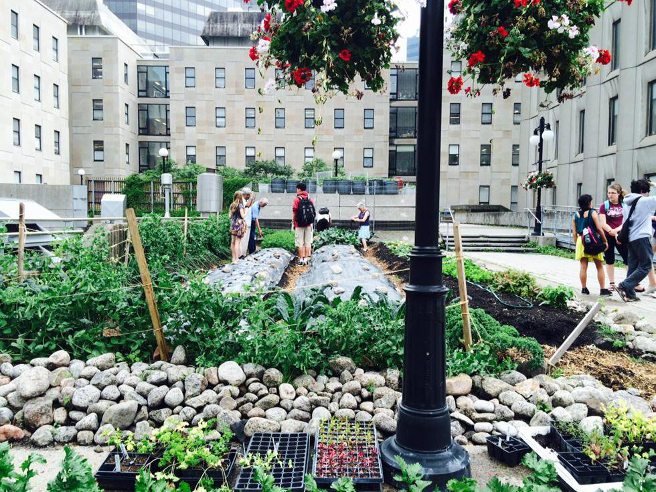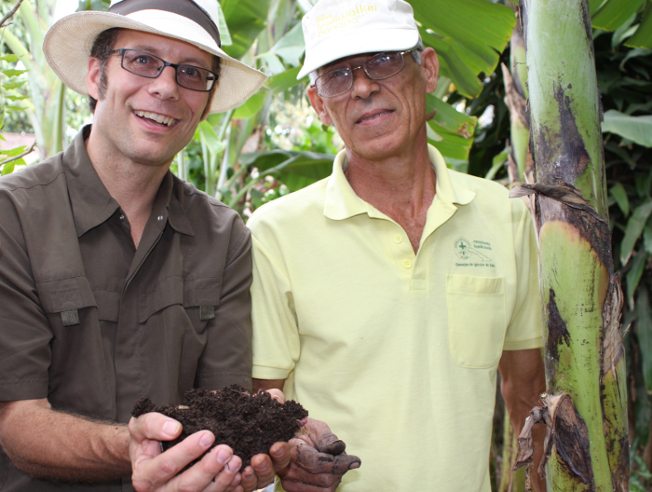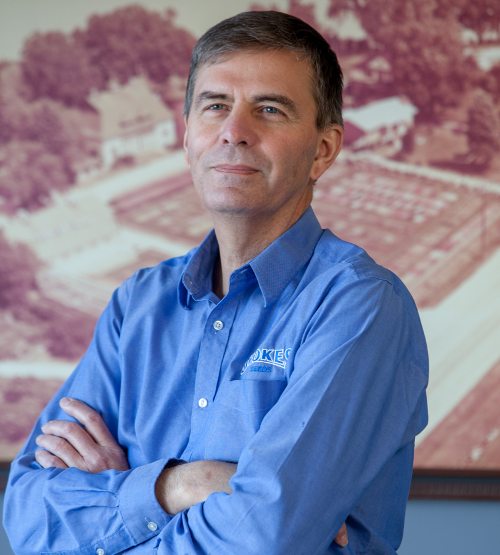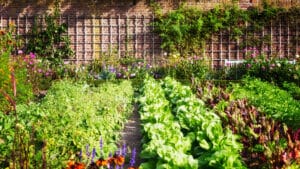Urban agriculture is enjoying a resurgence across the country as food security becomes an increasing priority for consumers. What opportunities does it present for the seed sector?
_x000D_
It’s no secret that urban agriculture has enjoyed a resurgence across Canada over the last decade. Urban gardens have been springing up from coast-to-coast at a frenetic pace, driven by consumer demand for greater food security and a desire to “buy local”._x000D_
_x000D_
Once considered primarily the domain of not-for-profits, urban agriculture is now attracting a new crop of urban farming businesses that are catering to so-called locavores — and looking to make a profit in the process._x000D_
_x000D_
One such operation is Lufa Farms in Montreal, which operates a 31,000-square foot greenhouse on top of a downtown office building and has more than 1,000 subscribers for its weekly food box program. Other large urban ag operations include Red Pocket Farms in Toronto and Sole Food Farms in Vancouver, with five farms spread out over 4.5 acres._x000D_
_x000D_
Some experts have called urban agriculture the wave of the future. It’s little wonder — consumer research conducted by Vineland Research and Innovation Centre in Ontario shows that more than a quarter of grocery shoppers consider themselves to be “socially responsible locavores.” Another study, conducted on behalf of BMO, indicated Canadians are willing to pay 16 to 19 per cent more for locally sourced produce._x000D_
_x000D_
Ron Berezan, an urban agriculture guru based in Powell River, B.C. and a frequent gardening commentator on CBC Radio, says while urban gardens are a relatively new concept in Canada, they have been immensely popular in the developing world for some time._x000D_
_x000D_
“There’s definitely been an uptick in activity in the last decade [here in Canada],” says Berezan, a certified permaculture teacher and designer._x000D_
_x000D_
“What is new for this generation is that in the last decade or so, people are feeling motivated again to want to grow their own food. For millennials, it’s a hip and cool sort of a thing and it’s part of the question of environmental sustainability for a lot of people.”_x000D_
Opportunities for the Seed Industry
_x000D_
The increased interest in urban agriculture has focused more attention on the power and potential of seed, Berezan says. Most larger urban centres now host Seedy Saturday events where people come together to swap seed, buy seed from commercial growers and attend workshops._x000D_
_x000D_
“That didn’t happen 20 years ago — those were not going on. It’s sort of grown together with the farmers’ market phenomenon and the whole local food phenomenon,” he says._x000D_
_x000D_
This newfound interest in urban ag is also influencing how new communities are planned. Berezan was recently invited to take part in design charrettes, or planning sessions, for two new subdivisions where urban agriculture was a key element developers wanted to include in their designs._x000D_
_x000D_
_x000D_
“The possibility for a bit of infrastructure to help people grow their own food is on the radar now as part of urban planning,” he adds._x000D_
_x000D_
Wayne Gale is president of family-owned Stoke Seeds in Thorold, Ont. and a member of the Canadian Seed Trade Association (CSTA) board of directors._x000D_
_x000D_
Gale says it’s difficult to forecast what the growth of urban agriculture will mean to the Canadian seed sector, especially in terms of breeding. Apart from facilities such as the Vineland and Simcoe research stations in Ontario, seed breeding doesn’t really exist on a large scale in this country, he says._x000D_
_x000D_
“Canada is at a little bit of a disadvantage because we are a smaller marketplace and we don’t have that homegrown breeding industry, so we’re a little more reliant on what the U.S. or Europe does,” he says._x000D_
_x000D_
One of the challenges for the Canadian seed sector when it comes to capitalizing on new opportunities such as urban agriculture will be determining how to maximize return on investment for any new products._x000D_
_x000D_
Gale says the return on investment for anything aimed primarily at the Canadian market is generally pretty small, “unless you get into something really big like turf or in some cases nursery stock, where it’s a huge number.”_x000D_
_x000D_
Still, there could be room for innovation. Gale says some seed products that have been designed for urban markets, such as carbon monoxide-resilient petunias, have been quite successful._x000D_
_x000D_
“If somebody identifies a niche and it’s large enough, there are opportunities to come up with a need and get the industry to try and breed to that need,” he says._x000D_
_x000D_
However, Gale believes there could be far more opportunities for Canadian seed companies in terms of distribution, which is one of the primary focuses of the industry._x000D_
A Growing Awareness
_x000D_
Vikram Bhatt is a professor of architecture at McGill University who has done extensive research on urban agriculture. One of his most recent projects focused on edible landscapes and how to incorporate urban agriculture into cities, particularly at a neighbourhood level, involving whole communities._x000D_
_x000D_
Bhatt says the growing interest in urban gardens has had a huge influence on the architectural community in this country and around the world. He cites Robson Square in Vancouver and Place Bonaventure in Montreal as prime examples of what can be achieved when urban greening is incorporated into large-scale developments._x000D_
_x000D_
“The awareness is much, much greater now. It’s not the exception — it’s becoming much more expected of the profession to be dealing with it,” he says. “It’s the clients who are demanding it.”_x000D_
_x000D_
Bhatt says one of the first things the seed industry should consider is working closely with proponents of such projects, especially smaller growers._x000D_
_x000D_
“It will require a little hand-holding in my opinion. To help grow food, it is important to know what plants require, but also what growers need, and how you prepare them,” he says._x000D_
_x000D_
_x000D_
“An avid gardener is an avid gardener. But if you want to initiate [newcomers] who are very eager and driven, you should have an educational side to facilitate things in a constructive manner. Know your constituency and understand its needs to work with them. If the seed industry recognizes this, it can become a very robust partner in the urban agriculture movement.”_x000D_
Small Players, Big Options
_x000D_
Berezan agrees. He says most urban farms are quite small compared to commercial farming operations, but collectively they offer a significant market for the seed industry._x000D_
_x000D_
“These are not people who are buying vast quantities of seed like most farmers are, but if you add them up, I would say it’s a pretty significant purchasing unit. And they’re buying smaller units of seed so they are paying more than someone who is buying bulk seed,” he explains._x000D_
_x000D_
Berezan adds urban agriculture could be a boon for some smaller seed producers who don’t have the capability of moving thousands of kilograms of product, but are nimbler and can respond quicker to customer needs than some larger-scale operations._x000D_
_x000D_
Growth in the urban farming market is also a great opportunity for seed companies to enhance seed diversity by catering to the specific needs of smaller urban farms, Berezan says. Doing so would help reduce the chances of less popular varieties from becoming lost or no long viable, he adds._x000D_
_x000D_
Gale says while the seed industry is better positioned to respond to already established needs in the market, that wouldn’t have to preclude it from considering new products for urban growers. He says freezer box watermelons and cherry tomatoes are examples of products that were developed before there was widespread demand for them._x000D_
_x000D_
“It’s hard to know whether you’ve got the product and you find the niche or you have the niche and then go look for the product,” he says. “Both require someone with a certain kind of vision.”_x000D_
_x000D_
Just a comment: Would your readers know what a locavore is? Probably – just wanted to check – so if this is a common term that I am unaware of, please leave it as is. If not though, here is how I would have the sentence:_x000D_
Once considered primarily the domain of not-for-profits, urban agriculture is now attracting a new crop of urban farming businesses that are catering to so-called locavores — a person whose diet consists only/principally of locally grown or produced food — and looking to make a profit in the process.













